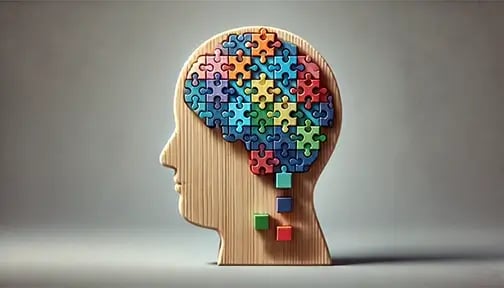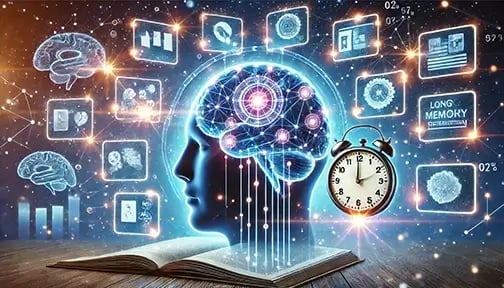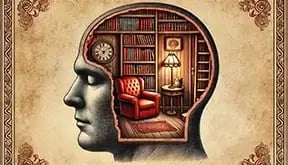Visualization is one of the most powerful tools in the learning process. When we convert abstract concepts into visual images, we tap into the brain’s natural ability to process and store information more effectively. Research suggests that learners who use these techniques have higher retention rates, improved comprehension, and a deeper understanding of complex topics. In this article, we will explore how this enhances learning, discuss different methods, and provide practical ways to incorporate visualization into daily study routines.
Why It Works for Learning
The brain is inherently wired to process visual information more efficiently than text. Studies show that the human brain processes images 60,000 times faster than words. Additionally, 90% of the information transmitted to the brain is visual. This makes visualization a crucial method for improving memory and recall.
1. Enhances Memory Retention
When we visualize information, we create stronger mental associations. Images are easier to remember than words because they engage more areas of the brain, particularly the occipital lobe, which processes visual stimuli. Creating a mental picture of a concept allows learners to store information in a more structured and lasting way.
2. Improves Comprehension
Abstract ideas are difficult to grasp when they are presented in textual form alone. Visualization simplifies complexity by breaking information down into clear, digestible images that help learners understand relationships between concepts.
3. Engages Multiple Senses
When learners create or interpret visual representations, they engage multiple senses, including sight, spatial awareness, and sometimes even touch (when using hands-on visual tools). This multi-sensory approach strengthens neural pathways, making information more accessible when needed.
Types of Image Techniques for Learning
There are several visualization methods that can be used to improve learning and information retention. The choice of technique depends on the learner’s preference, the subject matter, and the type of information being studied.
1. Mind Maps
Mind mapping is an effective way to visualize relationships between different concepts. A mind map starts with a central idea in the middle of the page, with branching subtopics that show how ideas are connected.
✅ How to Use It:
Write the main topic in the center of the page.
Draw branches for subtopics and add keywords or images.
Use colors and symbols to create an engaging and structured diagram.
2. Concept Diagrams and Flowcharts
Concept diagrams and flowcharts help learners understand processes and hierarchies. These tools are useful for subjects that require step-by-step reasoning, such as science, history, and programming.
✅ Best Uses:
Understanding cause-and-effect relationships.
Learning formulas and scientific processes.
Breaking down large amounts of information into clear steps.
3. Infographics and Charts
Infographics condense complex data into an easy-to-digest visual format. They use a combination of text, images, and graphics to present information clearly and concisely.
✅ Best Uses:
Comparing different ideas side by side.
Presenting statistical data and historical trends.
Summarizing key points in a visually engaging way.
4. The Memory Palace Technique
The Memory Palace technique, also known as the Method of Loci, is a powerful way to visualize information by associating it with specific locations. Learners mentally place items they need to remember in a familiar setting and retrieve them by imagining their journey through the space.
✅ Example: To remember a grocery list, picture a loaf of bread on your doorstep, milk on your living room table, and eggs on your bed. Walking through the house in your mind will help you recall the items more effectively.
5. Flashcards with Visual Cues
Flashcards are a well-known study tool, but incorporating visual elements can make them even more effective. Instead of just writing words, learners can add doodles, color coding, and diagrams to reinforce connections between concepts.
✅ Best Uses:
Memorizing vocabulary, dates, or formulas.
Reinforcing language learning with images.
Creating association-based memory techniques.
How to Incorporate This into Daily Learning
1. Draw Your Own Visual Aids
Even if you are not an artist, sketching simple diagrams, charts, and illustrations can help reinforce learning. The process of creating visuals forces you to engage actively with the material.
2. Use Digital Visualization Tools
There are many digital platforms designed to help learners create mind maps, diagrams, and infographics. Some popular tools include:
Canva – Great for designing infographics.
MindMeister – A useful tool for making mind maps.
Lucidchart – Best for flowcharts and concept diagrams.
3. Teach Others Using Visual Methods
One of the best ways to solidify knowledge is by teaching others. Use visualization techniques when explaining concepts to someone else. This could be through drawing diagrams on a whiteboard, using hand gestures, or creating an interactive slideshow.
4. Combine Visualization with Mnemonic Devices
Mnemonic devices like acronyms, rhymes, and chunking can be enhanced with visuals. For example, instead of just using the acronym HOMES to remember the Great Lakes (Huron, Ontario, Michigan, Erie, and Superior), imagine a small home surrounded by five different water bodies.
5. Use Color and Symbols Strategically
Color-coding notes, underlining key terms, and using symbols can make information stand out. Studies show that color improves recall by making material more engaging and organized.
The Science Behind Visualization and Learning
This isn’t just an anecdotal technique—it is backed by scientific research. Studies in cognitive psychology suggest that visual learners have improved recall and processing speed because images create strong neural connections.
Dual Coding Theory: Proposed by Allan Paivio, this theory states that the brain processes verbal and visual information separately. When learners use both text and visuals, they retain more information.
Picture Superiority Effect: Research shows that people remember 65% of visual information after three days, compared to only 10% of written or spoken information.
Spatial Learning Benefits: Studies on memory and cognition indicate that using spatial visualization techniques, such as the Memory Palace, strengthens recall and problem-solving skills.
Final Thoughts: The Power in Learning
Visualization is an essential tool for learning and retaining information. Whether through mind maps, diagrams, flashcards, or memory techniques, visualization enhances comprehension, strengthens recall, and makes learning more engaging. By incorporating these techniques into daily study routines, students and professionals alike can unlock the full potential of their memory and cognitive abilities.
Start practicing visualization today and experience firsthand how it transforms the way you learn.




